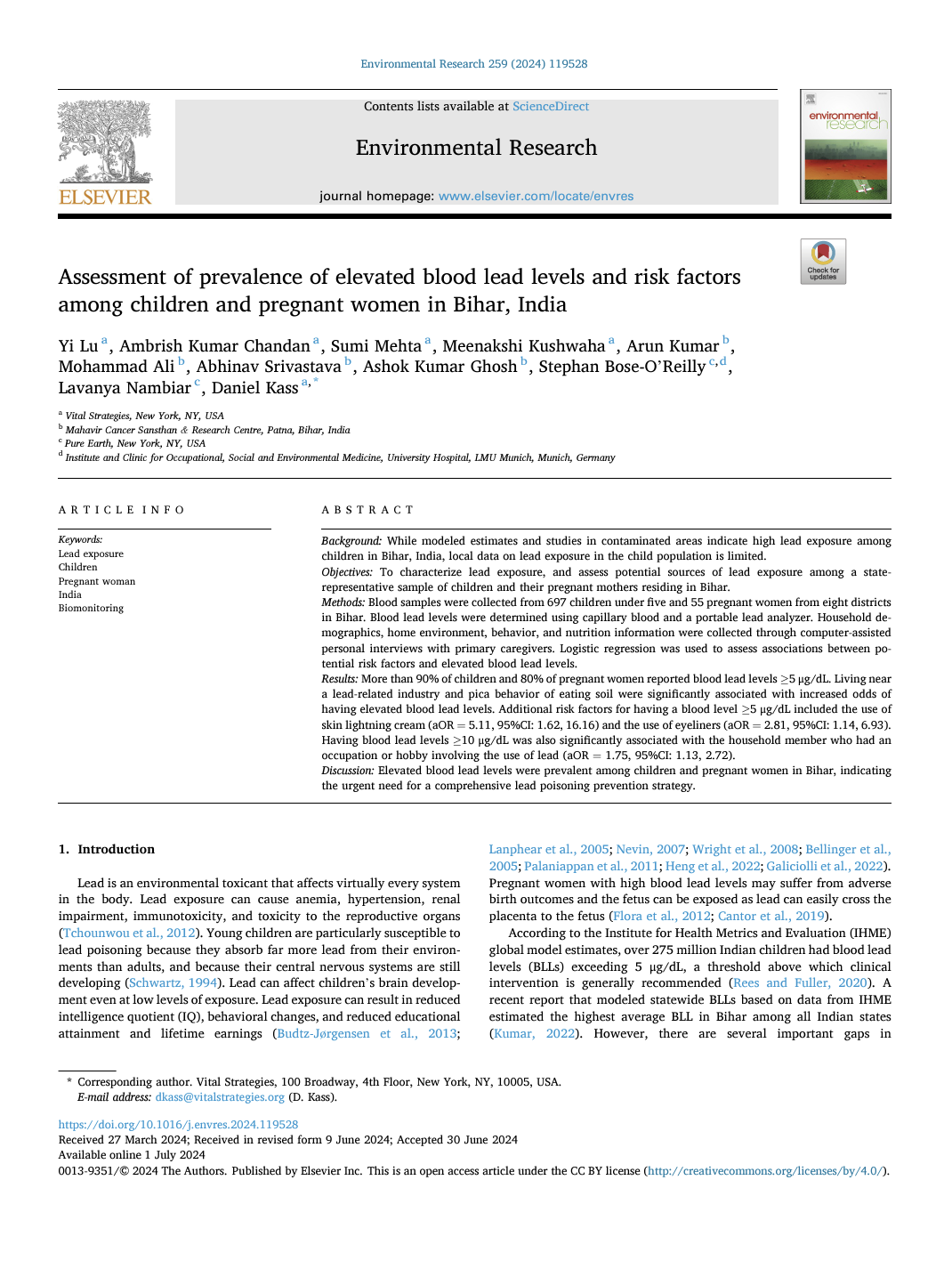While modeled estimates and studies in contaminated areas indicate high lead exposure among children in Bihar, India, local data on lead exposure in the child population is limited. This study aimed to characterize lead exposure and assess potential sources of lead exposure among a state-representative sample of children and their pregnant mothers residing in Bihar. Blood samples were collected from 697 children under five and 55 pregnant women from eight districts in Bihar. Household demographics, home environment, behavior, and nutrition information were collected through computer-assisted personal interviews with primary caregivers. Over 90% of children and 80% of pregnant mothers had elevated blood lead levels. Industrial activities, pica behavior of eating soil, and cosmetic use were potential sources of lead exposure. These high percentages of elevated blood lead levels indicate the urgent need for a comprehensive lead poisoning prevention strategy in Bihar.
Published July 9, 2024
Sign up to receive our monthly Research Roundup email, which offers a selection of new public health research from major journals.
Recent Abstracts
Testimonials: Personal stories that have the power to save lives on the road
Knowledge, Attitudes, and Practice Study on Lead Poisoning and Pollution in Indonesia
Improving Civil Registration and Vital Statistics Systems in French-Speaking Countries: Opportunities and Challenges
Strengthening the Civil Registration and Vital Statistics (CRVS) System in Colombia
Estimation of the direct and indirect costs attributable to alcohol consumption in Brazil
Guidance for Collection and Processing of Cause-of-Death Data in the Civil Registration and…
Vital Strategies: Reimagine Public Health
Public perceptions of emissions testing in Jakarta, Indonesia
Cost-Benefit Analysis for Air Pollution Control Strategies in Jakarta
Key Messages on Alcohol Harms and Policy Solutions
